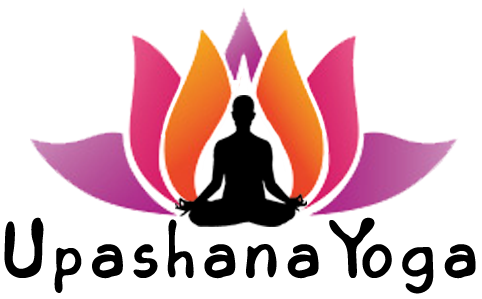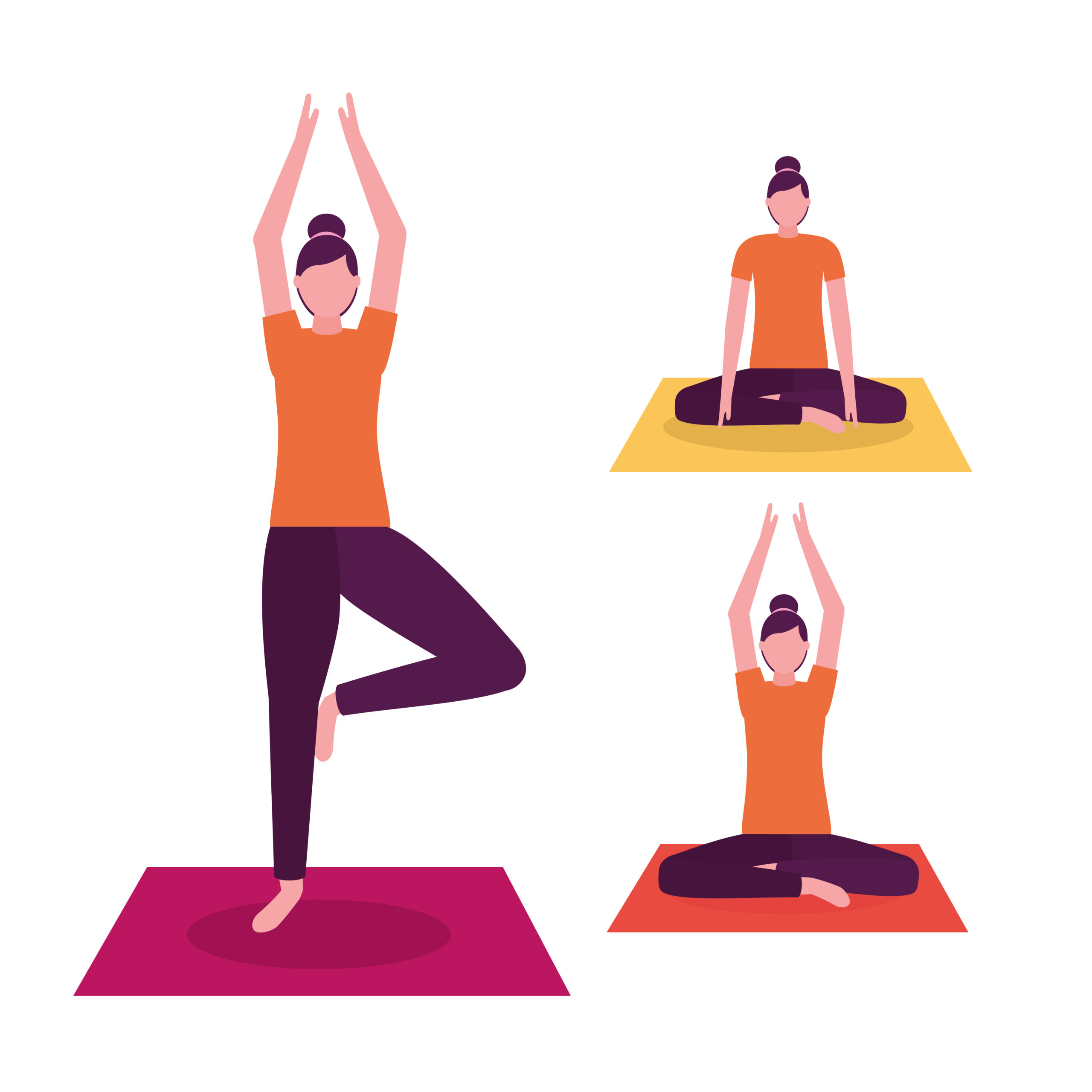
Yoga for Migraine: Migraine is more intense than a common headache. Some studies have shown that yoga can also help people who suffer from frequent migraines. Yoga calms and soothes your mind and body, as well as can help with ailments such as anxiety, depression and pain. The PNS can slow your heart rate and lower your blood pressure during yoga. Yoga helps in reducing the stress from your body. Yoga practice is not only a remedy to fight migraine but it is also an active approach to reduce the pain. Let us know in detail the method of doing yoga for migraine.
What is Migraine?
Migraine is a type of headache that is more painful than a normal headache. It usually causes a throbbing pain on one side of the head. Its causes are often accompanied by nausea, dizziness, and sensitivity to light and sound. Migraines can last from a few hours to a few days. Only a migraine sufferer really understands the pain of this. Below are the methods of doing some yoga asanas for its treatment.
(Also Read: 10 Effective Yoga For Premature Ejaculation)
How Yoga Can Improve Migraines:
Yoga is not just for physical fitness it can provide more benefits than this. It can bring peace to your mind and body, as well as help with ailments such as anxiety, depression, and pain.
It’s not clear exactly how yoga changes the body in this way, although the parasympathetic nervous system (PNS) may play a role during yoga. During yoga, PNS can slow your heart rate and lower your blood pressure. This allows your body to recover after a stressful event, such as a migraine.
Migraine is more intense than a common headache. They are usually characterized by throbbing pain on one side of the head. They are often accompanied by nausea, dizziness, and sensitivity to light and sound. Migraines can last anywhere from a few hours to a few days.
Not only is yoga practice a holistic approach to fighting migraines as they occur, it is also a proactive approach to reducing pain.
(Also Read: Top 9 Effective Yoga To Increase Oxygen Level In Blood)
Yoga for Migraine:
Yoga promotes a sense of holistic living through a combination of breathing techniques and asanas. It doesn’t have any side effects. It helps in various ailments by correcting energy flow and overall health in the body.
Specific yoga poses can reduce stress and tension, which contribute to your migraines. Certain yoga asanas can help promote blood circulation and improve blood flow to your brain. It can reduce the pain of your migraine.
Here are yoga poses for migraine that may help relieve your migraine symptoms and balance your physical, mental, and emotional states.
Adho Mukha Shvanasana Or Downward Dog Pose or Downward-facing Dog Pose:
Downward-facing dog is a pose that resembles the stretching of a dog. That’s why it is also known as Downward facing dog. This asana increases blood circulation to the brain and works towards healing the pain and reducing the frequency of migraine headaches. Regular practice of this asana can completely cure other physical disorders.
Steps To Do Adho Mukha Shvanasana Or Downward Dog Pose or Downward-facing Dog Pose:
- To do this asana, first of all, spread a yoga mat and stand straight on it. Keep a little gap between your two feet.
- Now keep bending forward and keep both your hands on the ground.
- Take both feet away from the hands so that your hands and spine come in a straight line.
- In this, an angle of 90 degrees will be formed between your leg and chest.
- Do the downward dog posture for a minute or two.
(Also Read: 7 Top And Effective Yoga For Slip Disc)

Pranayama For Migraine:
It is specially recommended by Ayurveda and Yogis to relieve and manage migraine pain. Other pranayamas that prove beneficial in the management of migraine are Kapalbhati Pranayama, Anulom Vilom Pranayama and Brahmari Pranayama.
Apart from having a healing effect on migraine, Bhastrika Pranayama increases our BMR, cures asthma, sinus conditions and digestive ailments. It purifies the blood, calms the mind and proves beneficial in cases of muscle laxity and oxygen deficiency disorders. It balances the Vata, Pitta and Kapha doshas of the body.
Steps To Do Bhastrika Pranayama:
- Spread a mat on a flat floor and sit on it in the lotus position.
- Keep your head, neck and body straight (in a straight line).
- Close your mouth.
- Inhale and exhale rapidly 10 times.
- Both the exhalation and the inhalation should sound like a blacksmith’s bellows.
- Your abdomen should expand and contract as you breathe in and your lungs as you exhale.
- 10 counts for one set.
- Pause for 10 seconds after each set is completed.
- During this position of pause, inhale slowly and fully to maximum lung capacity, hold for 3-5 seconds, and exhale slowly and fully.
- Repeat the set twice, pausing in between sets.
- The last exhalation should be followed by a deep breath.
- Pause after this breath for as long as it is comfortable.
- Exhale slowly and completely.
Shavasana or Corpse Pose:
Shavasana or Corpse Pose is a great basic climax. It brings about a deep state of relaxation in the body. The body drifts into an almost meditative state and is thoroughly rejuvenated. This rejuvenation also helps in warding off migraine.
Steps To Do Shavasana or Corpse Pose:
- To do this asana, lie down on your back by laying a yoga mat on the floor.
- Keep both your legs and arms straight.
- Now keep a distance of 1.5 feet between your two feet.
- Keep both your hands at 45 degrees from the body and keep the palms facing upwards.
- Now rest in this pose, keep this position for between 5 to 30 minutes.
- You are not supposed to sleep in this asana.
- You can live in Shavasana according to your capacity.
- Some people find it nice to listen to relaxing music during this pose.
- You may be sensitive to noise during a migraine, so you’ll need to decide whether music helps you relax.
- To get out of this pose, you must slowly bring your awareness back to your body.
- Push off your fingers and toes.
- Roll onto one side and allow yourself to rest there for a moment.
- Slowly lower yourself to an upright position.
(Also Read: Is It Safe To Do Yoga During Periods?)

Pashchimottanasana or Seated Forward Bend:
Paschimottanasana is another wonderful asana in yoga for migraine pain. This asana calms the mind and relieves stress, which are two major triggers for reducing migraine pain.
Steps To Do Pashchimottanasana or Seated Forward Bend:
- To do Paschimottanasana, sit in Dandasana by spreading both the legs straight in front of a clean place on a yoga mat.
- Raise both your hands up and straighten them.
- Now slowly bend forward and hold the feet with both your hands.
- Keep your head on your knees.
- Do this asana for 20 to 60 seconds.

Marjariasana or Cat Stretch:
Marjarasana is usually performed with the cow stretch or cat stretch. The combination of these two asanas is beneficial for our whole body. This asana is relaxing for the mind and muscles. This easy also improves your breathing ability and allows you to release tension. All these factors help to relieve the pain and symptoms of a migraine.
Steps To Do Marjariasana or Cat Stretch:
- To do this asana, keep both your hands on the ground by taking your knees on a yoga mat.
- Keep your torso parallel to the floor.
- Now while inhaling, move your head backwards and your chin up.
- After this, while exhaling, straighten the head.
- Now again inhaling, lower your head and try to touch your chin to the chest.
- Exhaling again, straighten your head.
- Do this asana at least 5 to 6 times.
(Also Read: Vajrasana Yoga Immediately After Having A Meal)

Padmasana or Lotus Pose:
Padmasana or the Lotus pose is a meditative pose that calms the mind and clears the head, thereby reducing headaches.
Steps To Do Padmasana or Lotus Pose:
- To do Padmasana, first of all spread a yoga mat and sit on it in Dandasana posture.
- Keep your spine straight.
- Now fold your right leg and place it on the thigh of the left leg.
- Now fold the left leg and place it on the thigh of the right leg.
- Keep both your hands straight on both the knees.
- Meditate by closing your eyes.
Setu Bandha Sarvangasana or Bridge Pose:
Setubandha asana is also called bridge pose. This asana controls your blood pressure and also calms your mind. It helps in removing anxiety. It sends fresh blood to your brain which helps in reducing the pain.
Steps To Do Setu Bandha Sarvangasana or Bridge Pose:
- To do Setubandha posture, you should lie down straight on a yoga mat.
- Now bend your legs from the knees and lift your hips up.
- Join both your hands under the back.
- While in this position, take 20 breaths and come out of the position.
(Also Read: 5 Best Yoga To Cure Navel Displacement)

Bālāsana or Child Pose:
Balasana yoga asana is also called child pose. This is a great relaxation pose which is known to be a stress reliever. This asana helps in giving a good stretch to your ankles, hips and thighs. When your body stretches, your nervous system calms down. Tension and fatigue are reduced and migraine disappears due to this.
Steps To Do Bālāsana or Child Pose:
- To do this asana, spread a yoga mat and sit on it in Vajrasana.
- Now slowly keep bending your head and keep the head on the ground.
- Keep both your hands straight in front of you on the floor.
- Try to stay in this asana for at least 2 to 3 minutes.

Uttanasana or Standing Forward Bend:
Uttanasana or Standing Forward Bend is a standing forward bend posture. It works on the core of the body as it stimulates the nervous system and increases blood circulation, thereby calming the mind. It helps in reducing migraine headache.
Steps To Do Uttanasana or Standing Forward Bend:
- To do Uttanasana, first of all, stand straight on a yoga mat.
- Keep both your feet close to each other and straighten both your hands up.
- Now slowly bend forward and down from the waist and try to touch the toes of the feet with both your hands.
- Stay in this posture for 60 to 90 seconds, then come out of the posture.
(Also Read: 11 Top And Best Yoga For Hips and Thighs)
Conclusion:
A 2014 study found that the frequency and intensity of headaches decreased in people who practiced yoga in addition to their regular treatments. These participants also experienced improvements in vagal sound, which refers to the amount of activity in the PNS.
Overall, yoga improved cardiac autonomic balance. Disturbances in the autonomic nervous system and regulation of the circulatory system are associated with migraine. If the balance in these is restored, then the chances of migraine are reduced.















Leave a Comment